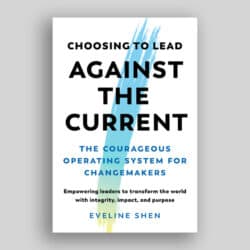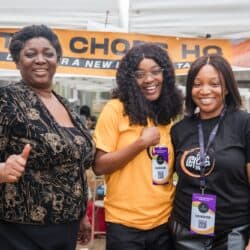Research shows that women’s leadership can lead to more inclusive workplaces, but according to DEI experts, researchers, and women leading organizations, that is not enough for a feminist transformation.
If a man and a woman, both non-profit leaders, walk into a room, who is more likely to lead a more inclusive organization? Do their races affect the answer? Do their sexualities? Does being born in Canada or being an immigrant change the probability?
Studies show that organizations with more women leaders are more likely to be more inclusive. But many studies do not have data on how leaders’ race, sexuality, gender orientation, physical and mental abilities, and other identities contribute to the way they lead. Can a leader’s gender determine if a workplace is more likely to support a wide range of employees? The Philanthropist Journal spoke to non-profit, DEI, and human resources professionals, who say inclusive organizations need more than a strong leader to set organizational culture. Some say inclusivity starts with the board.
DirectHer Network is an organization that empowers women with the knowledge and confidence to serve as board directors. A 2022 DirectHer report, Pathways to Board Work for Women and Gender Diverse People: Understanding Experiences and Barriers, explores the significance of board diversity and what stands in the way of women and gender-diverse people achieving more. “You’re only going to see [the] benefits that they’re talking about if one, you have the diverse board and two, if the organizational culture in the board is supportive and open and inclusive,” says Rachael Pettigrew, one of the co-authors of the report. “Not all women-identifying leaders are actually inclusive or allies.”
When the drive for inclusivity steers leaders toward burnout
According to Pettigrew, a minority of women in the focus groups that informed the report did not think their gender was a barrier to their career progression. Others, however, said they struggled to get their foot in the door. They said their ideas were not considered when they were appointed to boards. “In the focus groups, some of the participants were saying, ‘Sometimes, I’m let in the space and then they kind of go, like, “We let you in the door. Don’t make any problems for us now,”’” Pettigrew says.
As a society, we are recognizing diversity is a strength, but we haven’t created workspaces and environments so that people who are different can excel beyond their differences.
Aminka Belvitt, ForUsGirls Foundation
Aminka Belvitt, the president and CEO of the ForUsGirls Foundation, says this happens for women of colour hired as organization leaders as well. Belvitt’s foundation provides mentorship and workshops to develop young marginalized girls’ leadership skills. She is also a diversity and inclusion consultant. According to Belvitt, some organizations may seek women of colour to lead but do not support their leadership decisions, nor do they try to change the systemic barriers. “As a society, we are recognizing diversity is a strength, but we haven’t created workspaces and environments so that people who are different can excel beyond their differences,” she says, adding that this leads to many women of colour resigning.
For other leaders, burnout is the deciding factor. This was the case for Debbie Owusu-Akyeeah, who spent four years as an executive director. “I was taking on an organization that fundamentally had a lot of growing up to do,” Owusu-Akyeeah says. “And when you are hired [and] they don’t tell you directly that you’re here to fix things, that catches up with you in so many different ways. I think at the end of my tenure, I just realized that I needed [change] because it was just the right time.”
Pairing lived experience with professional expertise
Now Owusu-Akyeeah is the co-director of policy and advocacy at Action Canada for Sexual Health and Rights, where the leadership team are all women or gender-diverse people. Owusu-Akyeeah says this is the trend for her career, as she chooses to work primarily in gender-focused organizations, where the leaders have always been people affected by misogyny.
Owusu-Akyeeah, who is a Black woman and part of the 2SLGBTQIA+ community, says she is an inclusive leader because of who she is and what she studied. “I will always say that I’m a skilled person, and I’m going to own that with pride. But what makes those skills flourish is the lived experience that I bring in because I am asking different questions,” she says. “I always tell people to lean into that if they can. And I always frame it that way. It’s your expertise – your technical or lived – and everything else that you bring from an identity perspective just allows you to do things differently.”
I’m a skilled person . . . but what makes those skills flourish is the lived experience that I bring in because I am asking different questions.
Debbie Owusu-Akyeeah, Action Canada for Sexual Health and Rights
“Board diversity is huge,” Owusu-Akyeeah says, adding that board members should have technical expertise and lived experience to serve an organization and support its leader on their mission to create a more inclusive environment. She says that if a board does not understand the marginalized population, executive directors can end up feeling unsupported in their endeavours.
When DEI delivers and misses the mark
While organizations do not rely only on leaders’ lived experience to create inclusive organizations, those with women leaders may have the upper hand. Development Dimensions International’s Global Leadership Forecast 2023 shows that companies with strong diversity, equity, and inclusion programs have at least 35% women in leadership, while companies with no or low-quality DEI programs have only 25% women leaders.
According to a Charity Village report on 2024 charitable sector trends, 80% of respondents said they still pursue DEI initiatives, while 8% do not and 12% say DEI is not applicable to their work.
Farzeen Foda, the founder and principal of HR consulting firm PeopleStrategy.ca, says other aspects of diversity go beyond gender and the binary idea of men and women – such as race, ethnicity, and socio-economic status. “Particularly in management settings, looking at women in leadership really didn’t consider other aspects of diversity,” she says.
We started to see focus really drawn narrowly towards one aspect of identity.
Farzeen Foda, PeopleStrategy.ca
Foda says that with more stories of racial injustice dominating media headlines in 2020, organizations started focusing on leadership held by people across different races. “We started to see focus really drawn narrowly towards one aspect of identity, which I think is really the challenge that we’re ultimately grappling with,” she says. “We started [with] women in leadership, agnostic of any other aspect of identity, then we kind of headline-switched to something else, and then it switched to something else. It became just catching up all the time, whereas we really always should have just looked at diversity along all aspects of difference that we all inherently have.”
Foda says that inclusivity isn’t limited to just identities, but also includes the ways we work. “It takes a different leadership approach to be able to assess contribution and performance in-person as well as from a remote worker,” she says. She says this can affect people who are also caregivers, parents, or even people who have a longer commute.
Remote work also makes work more accessible for people with disabilities, as 35% of disabilities are related to mobility.
According to Supported Employment’s 2016 figures, less than 0.8% of corporate executives in Canada experienced disability (identified by federal disability tax credit claims, which are eligible only to people with severe and prolonged disability), while 60% of executives experienced disability more recently or did not have access to a medical professional to certify their condition.
The 2023 Benefits Canada Healthcare Survey found that 77% of members who lived with a chronic condition said that working from home helped them miss less work. This follows the 2020 pandemic lockdowns causing a global shift in work expectations, making work more accessible to employees. CultureAlly, another DEI company, launched in response to the big shift to remote life and because of increased attention on the lack of diversity in many companies.
Organizations led by women of colour often demonstrate a more nuanced understanding of intersectionality and are adept at creating inclusive environments that address the specific needs of marginalized groups.
Gabriela de Leon, CultureAlly
Gabriela de Leon, CultureAlly’s DEI operations manager, says that most of her clients are men, but within the company, they serve men and women who are trying to build on their existing knowledge to create inclusive organizations and advance DEI initiatives. “Generally speaking, the increased visibility of women leaders in managing the pandemic demonstrated the effectiveness of empathetic and inclusive leadership styles,” she writes in an email. “While both [white women and women of colour] are committed to DEI, organizations led by women of colour often demonstrate a more nuanced understanding of intersectionality and are adept at creating inclusive environments that address the specific needs of marginalized groups.”
Similar to the non-profit sector, the majority of workers in the HR industry are women. In a national survey from Human Resources Professionals Association and Chartered Professionals in Human Resources, 84% of respondents identified as female. Despite this, Foda makes an example of the state of workplace menopause policies where “diversity didn’t actually result in inclusion or change for a very, very long time.”
“There’s still a lot more work to be done to better support women at these various stages in their lives in the workplace, but we’ve had women in HR all these years in the workplace,” Foda says. “But has that voice really been heard and included and amplified? If it was, I think we would have seen stronger policies and processes in place for women way earlier in our own careers.”
Foda says she is starting to hear more conversations about supporting women in workplaces beyond leadership, including transitioning back to work after having a child and experiencing perimenopause. “These were things that women were just quietly enduring for all these decades, and though we were in a position perhaps to create that change, perhaps those voices were not encouraged. They weren’t heard,” she says.
Pressuring personal development against organizational change
For Surabhi Jain and Saralyn Hodgkin, their strategy for inclusive leadership is helping women focus on their inner work. They lead Women in Power, a leadership-development fellowship that dedicates space to discussing how lived experience and knowledge can make women better people and leaders. With programs designed specifically for white women and women of colour, Women in Power brings women together in a safe space to challenge themselves and engage with different narratives around race, patriarchy, and gender.
Jain, Women in Power’s founder and co-facilitator, says that 30 to 40% of their last cohort were women who worked as DEI consultants, but they’re not discussing DEI concepts. “You need to be equitable, you need to be inclusive, but just a 90-minute workshop on DEI does not teach you how to be a better person,” she says. She says their program will “actually force you to think about these ideologies: What is this bias coming from? What are their narratives? You and I don’t know, but perhaps it’s worth interrogating.”
You need to be equitable, you need to be inclusive, but just a 90-minute workshop on DEI does not teach you how to be a better person.
Surabhi Jain, Women in Power
Hodgkin, Women in Power’s co-facilitator, says that one of the exercises they do with women is an identity-mapping exercise because many people don’t take the time to consider the variety of ways they identify. “It’s not just the race, gender – everybody has other things that they’re coming in with,” she says. “When you look at an inclusion map, they’re checking a lot of other boxes . . . They all come in with different lived experiences. We create a brave space for them to share that in ways they choose.”
Still, both Jain and Hodgkin acknowledge that despite any transformative inner work their participants do, organizations and the systems they work within can still create barriers. “What we’re talking about here is inclusive leadership that is a practice, that is ever-evolving, that is with this inner development – and that requires a cultural shift,” Hodgkin says. “The influences in the water that these women and their organizations swim in need to shift as well.”
“There’s a lot of burden that is placed on women when they’re leaders, to ensure that organizations are equitable and inclusive by virtue of being a woman,” Jain says. “But what is not provided to them are support systems, whether that is from their own leadership team or from their board, or from the funders in the philanthropic sector, or investors in how they can make that happen. The systems don’t exist for her to make it happen.”


